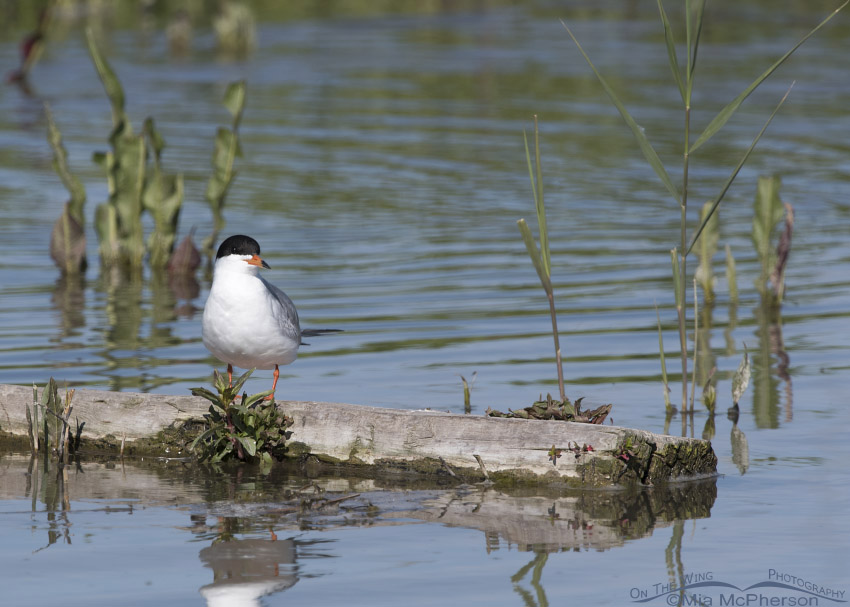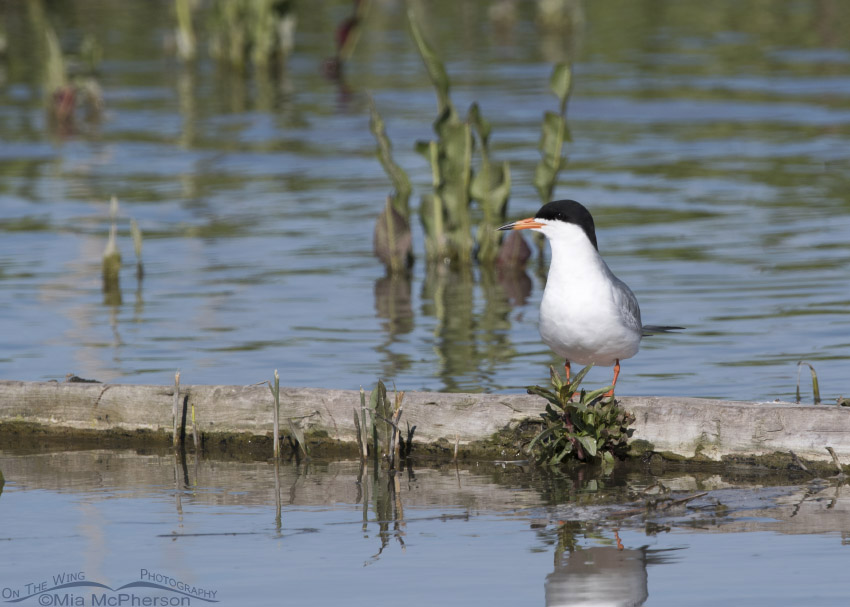 Forster’s Tern on a log – Nikon D500, f7.1, 1/1250, ISO 250, Nikkor 500mm VR with 1.4x TC, natural light
Forster’s Tern on a log – Nikon D500, f7.1, 1/1250, ISO 250, Nikkor 500mm VR with 1.4x TC, natural light
I love to take images that show my bird subjects filling the frame and I love to take portraits of birds that show the fine details in their plumage, their bills and their eyes but I also like to take images that show the habitat that my subjects live in by having the birds smaller in the frame by including more of the setting they are found in.
In spring Forster’s Terns migrate to the marshes that surround the Great Salt Lake here in Utah to breed and rear their young. They hover in the air over the water and then make spectacular dives to capture their prey. They are beautiful to watch while they are in flight and even when they are on the ground resting they are a visual delight with their dark caps, tiny orange legs and black and orange bi-colored bills.
A little more than a week ago I spotted this Forster’s Tern resting on a log in the water at Bear River Migratory Bird Refuge from the auto tour loop and I felt I had to hop out and take a few images from across the hood of my Jeep because I liked the setting as much as I enjoyed seeing the bird.
 Forster’s Tern in breeding plumage resting on a log – Nikon D500, f7.1, 1/1600, ISO 250, Nikkor 500mm VR with 1.4x TC, natural light
Forster’s Tern in breeding plumage resting on a log – Nikon D500, f7.1, 1/1600, ISO 250, Nikkor 500mm VR with 1.4x TC, natural light
I composed a few images with the Forster’s Tern more to the left and then the right before the tern decided it was time to move on. I liked the reflection, the vegetation in front of the log and in the background the twisted leaves of the out of focus curly dock behind the tern but I couldn’t decide which of these two frames I liked the most so I decided to edit and post them both. Some of my fellow bird photographers call photos like these “birdscapes” and that terminology seems to work quite well to describe them.
Life is good.
Mia
Click here to see more of my Forster’s Tern photos plus facts and information about this species.


Love your birdscapes.
Beautiful images of their habitat; “birdscapes” does sound less nerdy I’ll admit.
“Birdscapes” works for me…glad you included both images, because I like them both…like all the elements…colors, textures, patterns, horizontals, vericals…everything….
Beautiful, he must like that log I have a similar photo from Sunday. Like you I thought the over all setting was lovely. I have yet to get sharp photo of a dive, they are so fast when they go in for the fish.
Birdscapes Are good ,MiA. We